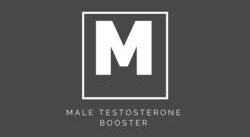Testosterone is the main male sex steroid produced by Leydig cells in the testes, with an average secretion rate of 7 mg/day. Based on calculations from spermatic vein/peripheral vein gradients.
Leydig cells can also release intermediate metabolites such as androsterone, androstenedione, 17-OH progesterone, progesterone, and Pregnenolone.
Approximately 5% of the T pool is of adrenal derivation. Studies in patients with prostate cancer demonstrated that human adrenals produce approximately 200 μg of T regardless of whether the patient had intact testes or was castrated, and an additional 200 μg of T is formed in the periphery from the conversion of adrenal-derived androstenedion].
Plasma T is bound to the sex-hormone binding protein (~44%) and albumin (~54%), and only 2% circulates freely. These three fractions of T are measured together, as “total Testosterone”, which is a reliable frontline tool for detecting hypogonadism.
- Three types of testosterone
- Bioavailable Testosterone
- What is Total Testosterone?
- What is Free Testosterone?
- Differences Between Total Testosterone and Free Testosterone
- Importance of Total Testosterone and Free Testosterone in Male Health
- Total Testosterone test
- Why you need to check free testosterone
- Benefits of Testing Free and Total Testosterone
- Conclusion
- FAQ Section
- Sources
Three types of testosterone
There are three types of testosterone in the bloodstream:
- SHBG bound testosterone. This is testosterone that is bound to a protein called SHBG.
- The testosterone is bound to a protein called albumin which is manufactured in the liver.
- Free testosterone, which is not attached to any proteins. This sort is the most useful for carrying out testosterone’s functions.
Total Testosterone = SHBG + Albumin + Free Testosterone
Remember, several conditions alter the absolute level of plasma SHBG, and will be associated with an increased (or decreased) serum level of total T.
SHBG (and total Testosterone) decreases in patients affected by obesity, T2DM, hypothyroidism, and nephrotic syndrome and increase with aging, pregnancy, hyperthyroidism HIV, and cirrhosis.
The level of testosterone in the blood varies during the day.
The highest levels are in the morning and the lowest levels are at night.
Bioavailable Testosterone
SHBG-bound T is not bioavailable because of the tight interaction existing between the two, which prevents SHBG-bound T to reach Androgen Receptors in the target cell.
Free and albumin-bound T represents the bioactive fraction of T. The fraction of T that enters the target cell and interacts with the Androgen Receptors.
The level of testosterone in the blood varies during the day. The highest levels are in the morning and the lowest levels are at night.
What is Total Testosterone?
Total testosterone is the total amount of testosterone in the bloodstream, including both bound and unbound testosterone. Bound testosterone is attached to a protein called sex hormone-binding globulin (SHBG), while unbound testosterone is free to circulate in the bloodstream. Total testosterone levels are measured in nanograms per deciliter (ng/dL) of blood.
What is Free Testosterone?
Free testosterone is the amount of testosterone that is not bound to SHBG and is therefore available for use by the body. Free testosterone levels are measured in picograms per milliliter (pg/mL) of blood. While free testosterone makes up only a small percentage of the total testosterone in the body, it is considered to be the most biologically active form of the hormone.
Differences Between Total Testosterone and Free Testosterone
The main difference between total testosterone and free testosterone is that total testosterone includes both bound and unbound testosterone, while free testosterone refers only to the amount of testosterone that is unbound and therefore available for use by the body. Total testosterone levels can be affected by factors such as age, sex, and health status, while free testosterone levels are a more accurate indicator of the body’s actual testosterone levels.
Importance of Total Testosterone and Free Testosterone in Male Health
Testosterone plays a crucial role in male health, with both total testosterone and free testosterone levels being important indicators of overall health and wellbeing. Low levels of testosterone can lead to a variety of health issues, including decreased libido, erectile dysfunction, depression, and decreased bone density. In addition, low testosterone levels have been linked to an increased risk of heart disease, diabetes, and other chronic health conditions.
How to Increase Total Testosterone and Free Testosterone Levels
There are a variety of natural ways to increase both total testosterone and free testosterone levels in the body. These include maintaining a healthy diet and lifestyle, exercising regularly, reducing stress, and getting enough sleep. In addition, certain supplements and medications can also help to increase testosterone levels, although it is important to consult with a healthcare provider before starting any new supplement or medication regimen.
Total Testosterone test
Total testosterone is the mainstay of the biochemical diagnosis of androgen deficiency and is recommended as the initial diagnostic test.
Indeed, in an international survey among 943 mostly adult endocrinologists, more than 90% of participants requested total testosterone, drawn in the morning as the initial diagnostic for workup of suspected androgen deficiency.
In practice, a normal fasting early morning total testosterone level (somewhat arbitrarily defined as ≥12 nmol/L) usually does not need to be repeated.
If the total testosterone is ≥12 nmol/L, non-specific symptoms will generally not be from androgen deficiency unless SHBG is markedly elevated or if there is androgen resistance, a rare condition.
Low total testosterone needs confirmation (additional test) because a falsely low level due to, for example, unrecognized intercurrent illness or assay imprecision at the lower range, particularly if measured with immunoassay (see below) is more likely than a falsely normal level.
Diagnosis of androgen deficiency should never be based on a single low testosterone level. Up to 35% of men with a low testosterone level will have a normal testosterone level on repeat testing
Why you need to check free testosterone
Circulating testosterone is mainly plasma protein bound, 60% tightly to sex hormone-binding globulin, and 38% loosely to albumin, while 0.5–2% circulates as free testosterone.
A free testosterone test may be helpful when total testosterone is borderline and/or the clinical picture does not agree with the total testosterone measurement.
For example, free testosterone can be useful to exclude hypogonadism in men where low total testosterone is due to low SHBG because of insulin resistance in obesity or diabetes.
In this context, normal free testosterone can be reassuring in that nonspecific symptoms are not due to androgen deficiency. However, the age-related decline of free testosterone is steeper than that of total testosterone because of the age-associated increase in SHBG.
A low free testosterone level should be evaluated with caution to confirm hypogonadism in older men
because the risk of overdiagnosis is substantial given that assay reference ranges are usually based on findings in young men.
An extreme case of a “falsely low” total testosterone was recently described in a man who presented with an extremely low total testosterone level but essentially normal masculinization. SHBG levels were undetectable because of a missense mutation in the SHBG gene, and dialyzable free testosterone was in the reference range.
In certain instances, men can be androgen deficient despite a normal total testosterone level, and this usually occurs if SHBG is markedly elevated most commonly in the setting of anti-epileptic treatment or chronic liver disease, but these men typically have elevated gonadotropin levels and a clearly low free testosterone level.
Free Testosterone Test Methods
Laboratory equilibrium dialysis is the gold standard for free testosterone measurement, but is not widely available, because of assay complexity and cost.
The free androgen index is inaccurate in men and should not be used, and free analog displacement using direct free testosterone (analog) assay is analytically invalid and should not be used.
In practice, free testosterone is usually calculated using empiric formulas.
Five different formulas (two based on equilibrium binding, three empirical) are commonly used to calculate free testosterone.
There is currently no universally accepted formula that accurately reflects the interaction between plasma protein-bound and free testosterone.
In addition, these formulas are critically dependent (80 % variance) on the accuracy of the total testosterone and SHBG assays, and may augment errors in their measurement.
During hypogonadism with aging, testosterone falls from maximal concentrations to the end decade of life.
Free testosterone falls faster than total testosterone.
Recent data indicate that testosterone replacement may enhance sexual drive and function in older men.
Benefits of Testing Free and Total Testosterone
Testing free and total testosterone levels can provide valuable insights into your hormonal health and overall well-being. Here are some key benefits of undergoing testosterone testing:
- Accurate Assessment of Testosterone Levels: By measuring both free and total testosterone, you can obtain a more comprehensive understanding of your testosterone status. Total testosterone levels alone may not accurately reflect the amount of biologically active testosterone in your body. Testing free testosterone allows for a more precise evaluation of the testosterone available for use by your cells.
- Diagnosis of Hormonal Imbalances: Low testosterone levels can contribute to various health issues, including decreased libido, erectile dysfunction, fatigue, depression, and reduced bone density. By testing free and total testosterone, healthcare professionals can assess if hormonal imbalances are causing or contributing to these symptoms. This information can guide appropriate treatment decisions.
- Individualized Treatment Plans: Testing free and total testosterone helps healthcare providers tailor treatment plans specific to your needs. If low testosterone levels are identified, appropriate interventions can be recommended to optimize your hormonal balance. This may include lifestyle modifications, such as exercise and dietary changes, or in some cases, testosterone replacement therapy.
- Monitoring Treatment Progress: For individuals undergoing testosterone replacement therapy or other interventions to increase testosterone levels, regular testing of free and total testosterone is essential for monitoring treatment progress. These tests help determine if the treatment is effectively raising testosterone levels and achieving the desired therapeutic outcomes.
- Prevention and Management of Health Conditions: Maintaining optimal testosterone levels is crucial for overall health. Low testosterone has been associated with an increased risk of conditions like heart disease, diabetes, metabolic syndrome, and osteoporosis. By monitoring free and total testosterone, healthcare providers can identify potential risks early on and implement preventive measures or interventions to manage these conditions.
- Personalized Health Optimization: Understanding your free and total testosterone levels can empower you to take charge of your health and make informed decisions about lifestyle choices, nutrition, and exercise. By optimizing your testosterone levels, you can enhance energy levels, improve mood, support healthy sexual function, and promote overall well-being.
Testing free and total testosterone levels offers valuable information about your hormonal health and can assist in diagnosing hormonal imbalances, guiding treatment decisions, monitoring progress, and optimizing overall health. By working closely with healthcare professionals and considering the results of these tests, individuals can take proactive steps to maintain optimal testosterone levels and improve their quality of life.
Conclusion
Gentlemen, it’s time to take control of your health and well-being. If you’re feeling sluggish, lacking motivation, or just not feeling like your best self, it could be due to low testosterone levels. But don’t worry, there’s a way to find out for sure – by testing your free and total testosterone.
You see, testosterone is not just about muscles and masculinity. It plays a crucial role in our overall health, affecting everything from our energy levels to our mood and even our sex drive. That’s why it’s so important to measure both free and total testosterone levels.
Free testosterone is the unbound testosterone in our bloodstream, the kind that is readily available for our bodies to use. It’s what gives us that extra boost of energy, drive, and confidence. Total testosterone, on the other hand, measures the total amount of testosterone in our bloodstream, including the testosterone that is bound to proteins.
By measuring both free and total testosterone, we can get a better understanding of our overall testosterone levels and how it’s affecting our health and well-being. Low testosterone levels can lead to a whole host of problems, including fatigue, low sex drive, weight gain, and even depression.
But here’s the good news – if your testosterone levels are low, there are things you can do about it. From lifestyle changes to hormone replacement therapy, there are options available to help you optimize your testosterone levels and start feeling like your best self again.
So don’t wait any longer – take control of your health and get your free and total testosterone levels tested. It could be the key to unlocking a healthier, happier you.
FAQ Section
Question: What is a good free-to-total testosterone ratio?
A free-to-total testosterone ratio is a measure of how much testosterone in your blood is free, or not attached to any proteins, and how much is bound to proteins such as albumin and sex hormone-binding globulin (SHBG). Free testosterone is the active form of testosterone that can interact with receptors in your cells.
The normal range of free to total testosterone ratio varies depending on the laboratory and the method used, but generally, it is between 1.5% to 2.5% for men and 0.5% to 1.5% for women . A low ratio may indicate low levels of free testosterone, which can cause symptoms such as fatigue, low sex drive, erectile dysfunction, hair loss, osteoporosis in men, and irregular periods, infertility, acne, and excess hair growth in women. A high ratio may indicate high levels of free testosterone, which can cause symptoms such as aggression, acne, oily skin, baldness, enlarged clitoris, and skipped periods in women.
Question: What is normal free testosterone and low total?
Free testosterone is the amount of testosterone in your blood that is not attached to any proteins, such as albumin and SHBG. It is the active form of testosterone that can interact with receptors in your cells. Total testosterone is the sum of free testosterone and bound testosterone.
Normal free testosterone levels in healthy, adult men range from 5.25 – 20.7 ng/dL, or nanograms per deciliter of blood. Normal total testosterone levels in healthy, adult men range from 300 – 1200 ng/dL. These ranges may vary slightly depending on the laboratory and the method used.
It is possible to have normal free testosterone and low total testosterone levels, or vice versa. This can happen because of various factors that affect the production or binding of testosterone, such as age, medications, health conditions, lifestyle, and genetics.
If you have normal free testosterone and low total testosterone levels, you may not experience any symptoms of low testosterone, as free testosterone is the active form of the hormone. However, low total testosterone may indicate a problem with your testes or pituitary gland, which control how much testosterone your body makes.
If you have low free testosterone and normal total testosterone levels, you may experience symptoms of low testosterone, such as fatigue, low sex drive, erectile dysfunction, hair loss, and osteoporosis in men, irregular periods, infertility, acne, excess hair growth in women. Low free testosterone may be caused by high levels of SHBG, which binds to testosterone and reduces its availability.
Question: Is free testosterone more important than testosterone?
Free testosterone is more important than total testosterone for your health and well-being, as it is the active form of testosterone that can interact with receptors in your cells. Total testosterone is a measure of both free and bound testosterone, but bound testosterone is not available to your cells.
Free testosterone makes up only about 2-5% of your total testosterone, while the rest is bound to proteins such as albumin and SHBG. Factors that affect the production or binding of testosterone can change the ratio of free to total testosterone in your blood. For example, high levels of SHBG can lower your free testosterone level, even if your total testosterone level is normal.
Therefore, it is important to measure both free and total testosterone levels to get a complete picture of your hormonal status. A blood test can show you how much free and total testosterone you have in your body.
Question: Which testosterone is most important?
As we mentioned before, free testosterone is the most important form of testosterone for your health and well-being, as it is the active form of testosterone that can interact with receptors in your cells. Free testosterone is responsible for many functions in your body, such as sex drive, muscle and bone growth, mood, and fertility . Having a healthy free testosterone level can help you feel more energetic, confident, and satisfied with your life.
Question: What is a normal free testosterone level by age?
Normal free testosterone levels vary by age and sex. Here are some average ranges of free testosterone levels in ng/dL for different age groups and sexes:
- Children (7-10 years old): 1.80-10.29 for males; 2.69-10.29 for females
- Adolescents (13-17 years old): 208.08-496.58 for males; 16.72-31.55 for females
- Adults (19 years and older): 5.25-20.7 for males; 0.3-1.9 for females
Free testosterone levels tend to decline with age, especially after 30 years old. However, other factors such as health conditions, medications, lifestyle, and genetics can also affect free testosterone levels.
Sources
- Testosterone Test: Free & SHBG, High vs. Low vs. Normal Levels – WebMD. https://www.webmd.com/a-to-z-guides/testosterone-test
- The practical management of testosterone deficiency in men. https://www.nature.com/articles/nrurol.2015.238.
- Testosterone Test: Levels, How It’s Done & Results. https://my.clevelandclinic.org/health/diagnostics/24215-testosterone-test.
- Total T or Free T: Which is the Better Test for Androgen Deficiency? https://www.medpagetoday.com/resource-centers/hypogonadism/-total-t-free-t-which-better-test-androgen-deficiency-/1107
- Testosterone deficiency: Practical guidelines https://bcmj.org/articles/testosterone-deficiency-practical-guidelines-diagnosis-and-treatment.
- Sodergard R, Backstrom T, Shanbhag V, Carstensen H. Calculation of free and bound fractions of testosterone and estradiol-17 beta to human plasma proteins at body temperature. J Steroid Biochem. 1982;16:801–10.
- Vermeulen A, Verdonck L, Kaufman JM. A critical evaluation of simple methods for the estimation of free testosterone in serum. J Clin Endocrinol Metab. 1999;84:3666–72.
- Ly LP, Sartorius G, Hull L, Leung A, Swerdloff RS, Wang C, Handelsman DJ. Accuracy of calculated free testosterone formulae in men. Clin Endocrinol (Oxf). 2010;73:382–8.
- Raivio T, Palvimo JJ, Dunkel L, Wickman S, Janne OA. A novel assay for determination of androgen bioactivity in human serum. J Clin Endocrinol Metab. 2001;86:1539–44.
- Jarow JP, Troiani J, McNellis D, Wiederhorn R, Fang G, Handelsman H. Use of biomarkers to assess tissue-specific androgen adequacy: defining male hypogonadism. J Urol. 2013;189: 633–7.
- Wang C, Nieschlag E, Swerdloff R, Behre HM, Hellstrom WJ, Gooren LJ, Kaufman JM, Legros JJ, Lunenfeld B, Morales A, Morley JE, Schulman C, Thompson IM, Weidner W, Wu FC. Investigation, treatment, and monitoring of late-onset hypogonadism in males: ISA, ISSAM, EAU, EAA, and ASA recommendations. J Androl. 2009;30:1–9.
- Bhasin S, Pencina M, Jasuja GK, Travison TG, Coviello A, Orwoll E, Wang PY, Nielson C, Wu F, Tajar A, Labrie F, Vesper H, Zhang A, Ulloor J, Singh R, D’Agostino R, Vasan RS. Reference ranges for testosterone in men were generated using liquid chromatography-tandem mass spectrometry in a community-based sample of healthy nonobese young men in the Framingham Heart Study and applied to three geographically distinct cohorts. J Clin Endocrinol Metab. 2011;96:2430–9.
- Yeap BB, Alfonso H, Chubb SA, Handelsman DJ, Hankey GJ, Norman PE, Flicker L. Reference ranges and determinants of testosterone, dihydrotestosterone, and estradiol levels measured using liquid chromatography-tandem mass spectrometry in a population-based cohort of older men. J Clin Endocrinol Metab. 2012;97:4030–9.
- https://maletestosteronebooster.com/testosterone-and-mental-health/






You need to take part in a contest for one of the highest quality sites on the net. I am going to recommend this site!
A motivating discussion is definitely worth comment. I do believe that you ought to publish more about this subject, it may not be a taboo subject but usually people dont speak about these subjects. To the next! Kind regards!!